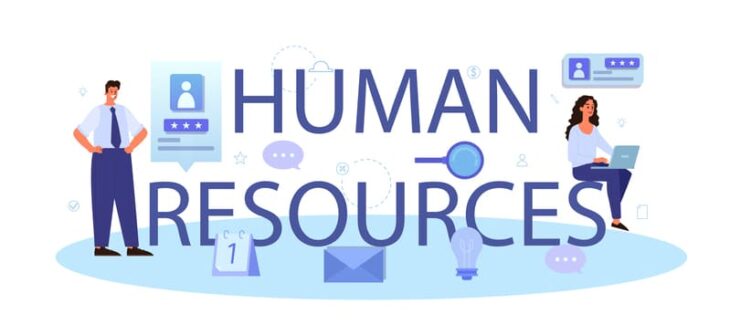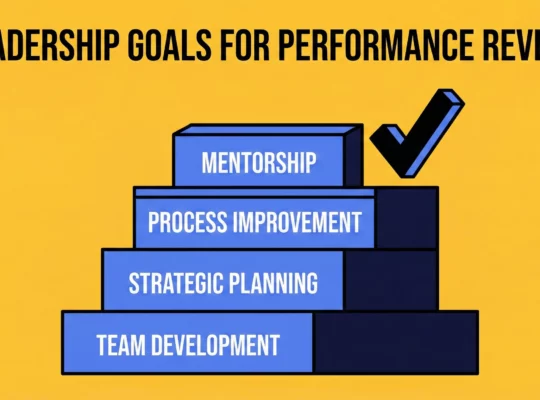Human resources management is a process aimed at improving the performance of a company. It makes it possible to monitor and improve the Human Resources policy and also contributes to the achievement of socio-economic objectives.
However, HR managers already have specifications focused on the administrative and daily management of employees. For the steering system to be efficient, it is important to clearly define its objectives and to have the right implementation tools.
That being said, what are the objectives of such a procedure? What are the fundamental tools to have to ensure the success of human resources management?
The objectives of human resources management
HR management essentially aims to:
- Collect, classify, process and analyze a company’s HR data, ensuring that it is up-to-date and credible;
- Transmit the collected data to managers and their employees when necessary;
- Identify problems and possible difficulties related to HR management;
- Analyze the performance of the HR strategy and calculate the ROI or return on investment of the HR strategy.
Data collection
Data collection consists of collecting all the professional and personal data of employees essential to good HR management. It is therefore interested in:
- Professional data such as employee performance or skills, career or training projects;
- Administrative data such as payslips, dates of hiring or departure, dates of leave or absence;
- Financial and economic data such as the company’s turnover, the performance of a department, customer satisfaction, etc. ;
- Computer data relating to the duration of staff connection, the duration of telephone calls or the duration devoted to research.
This data must be recorded in a database and regularly updated in order to be usable during the analysis stages of the human resources management process.
Dissemination of concrete information
This objective aims to disseminate to employees and managers, the information resulting from the collection of the company’s data.
This data can be stored in a secure database that employees and HR managers can consult as needed. They may also be relayed in the form of periodic reports published quarterly, semi-annually or annually.
However, they must be presented in a way that is easily exploitable, in order to help decision-makers define good strategies for the evolution of the business.
Problem identification
Problem identification involves identifying any issues involving HR that may have a short- or long-term impact on the company’s performance. These are challenges such as:
- The issue of teleworking or the digitalization of certain departments of the company;
- Conflict management;
- Remuneration and evaluation of employee performance;
- Employee loyalty and motivation;
- Management of the company’s turnover ;
- Etc.
The collection of employees’ opinions is fundamental at this level, because it allows to have a clearer and concrete vision of the challenges facing the company.
Analyze HR strategy results and calculate ROI
To analyze the results of the HR strategy and determine its ROI, performance indicators or KPIs must be defined. It should be noted that these indicators are specific to each company, depending on the HR policy that has been adopted.
Nevertheless, it is important to remember that the following aspects must be taken into account in the evaluation. They are:
- The well-being of the company’s human capital, which can be assessed through statistics related to psychosocial risks and quality of life at work;
- Employee satisfaction, which is measured through the turnover rate, employee retention rate and number of absences;
- The productivity of the various tools to help with daily work in companies.
The quality of the conclusions of the human resources management system will depend considerably on the relevance of these indicators.
The different human resources management tools
5 fundamental tools are used for good human resources management. These are:
- The social balance sheet;
- Individual social balance sheet or BSI;
- Single database or BDU;
- The dashboard;
- HRIS.
The social balance sheet
The social balance sheet is one of the documents to have absolutely for a good management of human resources. It is established over a period of 3 years, but companies with a minimum workforce of 300 employees must publish it every year.
The social balance sheet is based on seven (7) elements:
- Employment;
- Remuneration;
- Good hygiene and safety;
- Working conditions;
- Training;
- Professional equality;
- Other working conditions, namely the costs of transport, accommodation and social events for employees.
The individual social balance sheet or BSI
The individual social assessment is another fundamental tool for managing human resources. It is a specific document for each employee of the company. It summarizes the salaries and benefits that an employee receives each year.
The employer or HR manager is not obliged to provide it, but it is better to make it available. It can be edited in digital or paper format.
It is a guarantee of transparency that allows the employee to follow the evolution of their status in the company, and promotes exchanges between the HR department and employees.
The Economic, Social and Environmental Database (ESDB)
Formerly called BDU, the Economic, Social and Environmental Database is another essential tool for managing human resources. It contains all the relevant data that can provide information on the health of the company.
Thus, it contains all the elements already mentioned in the social report, to which are added:
- All investments made, both tangible and immaterial;
- Professional equality between men and women in society;
- The financial statement of the company;
- The balance sheet of the company’s social and cultural activities;
- Tax credits, debts;
- The company’s environmental commitment;
- The environmental consequence of the company’s activities if it is essential for its sector of activity;
- Subcontracting transfers.
The HR dashboard
It is one of the best tools for human resources management. It is a manual that summarizes all HR indicators and information. It is essential for the HR professional in decision-making.
It also makes it possible to identify blockages and errors related to the management of staff performance. It contains key data on:
- Recruitment;
- Employee performance;
- Training;
- To the work environment.
HRIS
The Human Resources Information System or HRIS is a tool to support Human Resources management. It automates 4 main categories of tasks that are:
- Payroll management, i.e. salaries, bonuses, commissions and all other forms of compensation of employees;
- The management of work services, which includes the recording and monitoring of leave and absences, as well as the distribution and organization of work in the company;
- The management of social benefits, which are mainly health insurance, insurance against accidents at work and the various pensions awarded to employees;
- Employee management that follows and supervises the journey of employees in the company from their recruitment to their departure from the company.
An HRIS can also be used to enhance the employer brand and optimize recruitment processes by contributing to the maintenance of a talent pool. It also makes it possible to optimize the management of working time within the Human Resources department.
In summary, human resources management is a set of practices and measures that collect information on the human and socio-economic capital of the company.
The data collected is then analyzed and makes it possible to anticipate certain blockages, such as the departure of employees, the appearance of conflicts, the lack of material resources, etc. It also makes it possible to review and improve the company’s HR policy.
In addition, to succeed in HR management, it is essential to have the right tools. The most important are the social report, the economic, social and environmental database, the HR dashboard and the HRIS. All are decision-making tools and provide information on the proper functioning of the company.
A document, the individual social report, can be edited and given to each employee once a year. It is not mandatory, but editing it can help improve the image of the company and build trust between managers and employees.
Finally, it is always recommended to collect the opinions of employees during the various stages of human resources management. They are the first actors in the life of the company and the guarantors of its evolution, hence the need to involve them in any process aimed at performance.
Their contributions can be recorded on a specific platform and analyzed by an external specialist, for greater transparency and objectivity. The results will then be recorded in the HRIS in order to improve the human resources management policy.
Do you want a safe platform to collect your employees’ opinions?
Custplace gives you the possibility. It is a platform that allows your company to benefit from a page, through Avisalarie.com, on which your employees can leave their opinions on your structure. Knowing what your team members think about your business should allow you to make the right decisions to improve your performance. Signing up for the offer also allows you to respond to reviews left on your page. You can click here for more details.
FAQs
What are the objectives of human resources management?
The objectives of human resources management are multiple. It aims to collect, classify, process and analyze HR data for effective management. Management makes it possible to transmit relevant information to managers and employees. It identifies problems related to HR management and evaluates the performance of the HR strategy, calculating the ROI. In summary, the purpose of human resources management is to make HR data usable, improve the company’s performance, solve HR challenges and measure the effectiveness of the actions implemented.
What are the fundamental tools to ensure the success of human resources management?
To ensure the success of human resources management, five fundamental tools are essential. These are the social report that summarizes HR data over three years, the individual social report for each employee, the Economic, Social and Environmental Database (BDESE) that contains the company’s key data, the HR dashboard to help decision-making, and the Human Resources Information System (HRIS) that automates HR management. These tools make it possible to collect, analyze and effectively exploit the company’s HR data.





